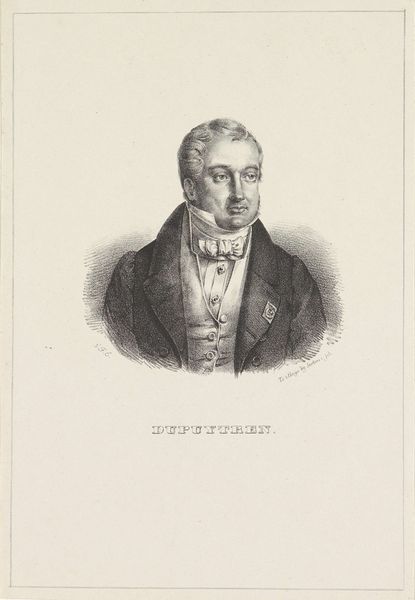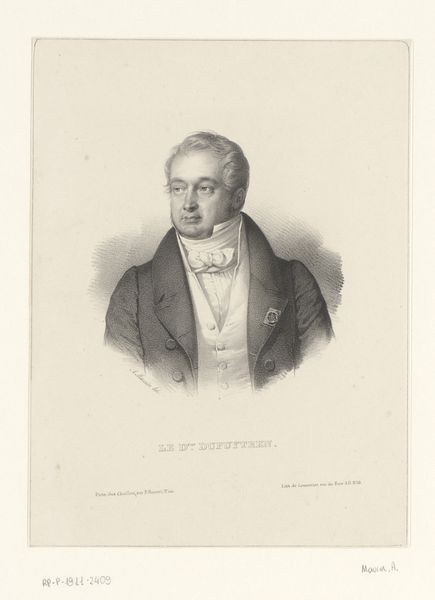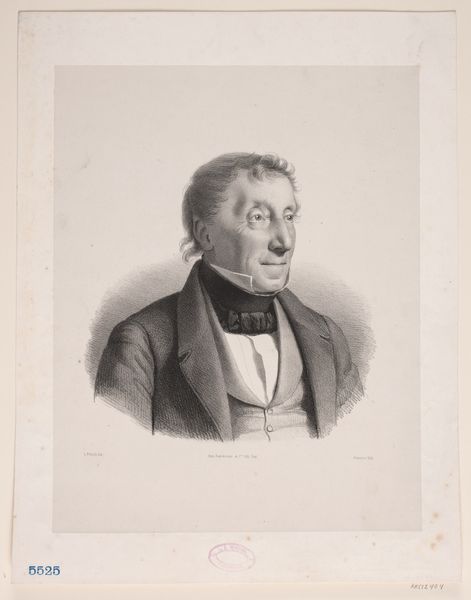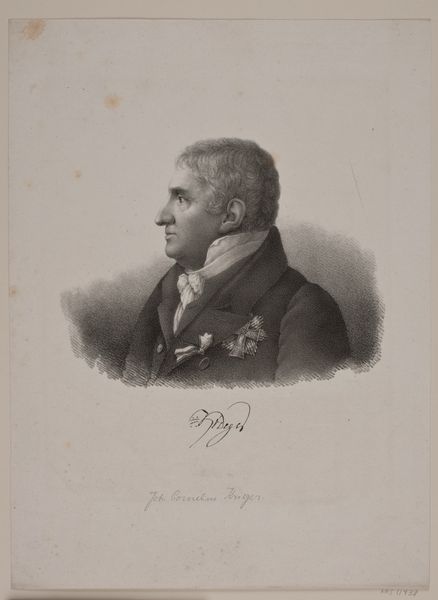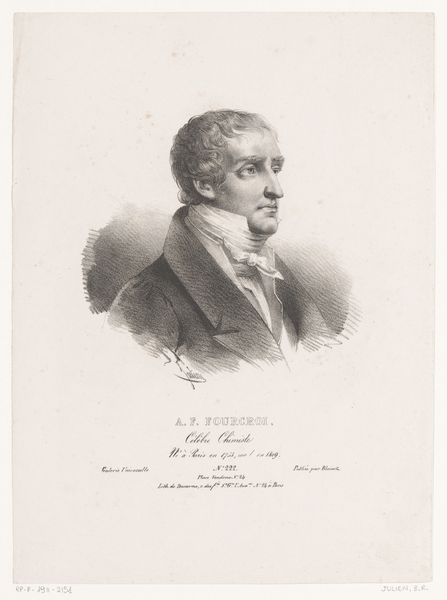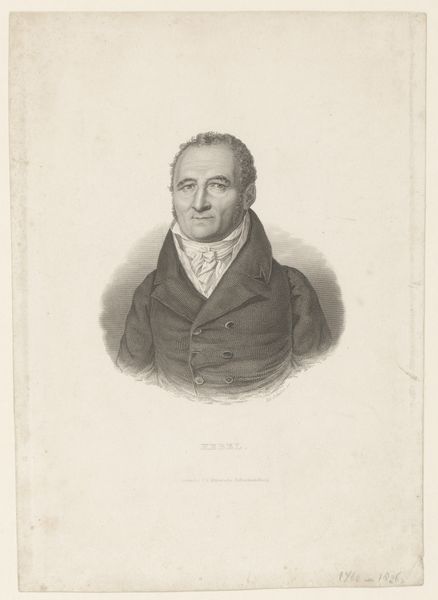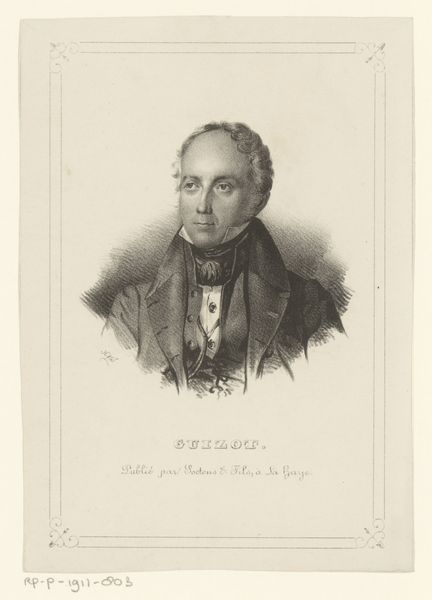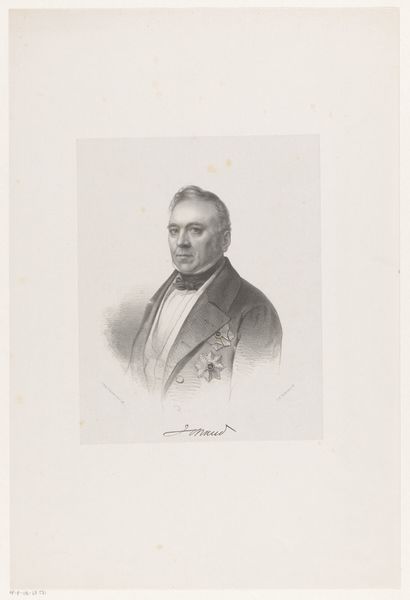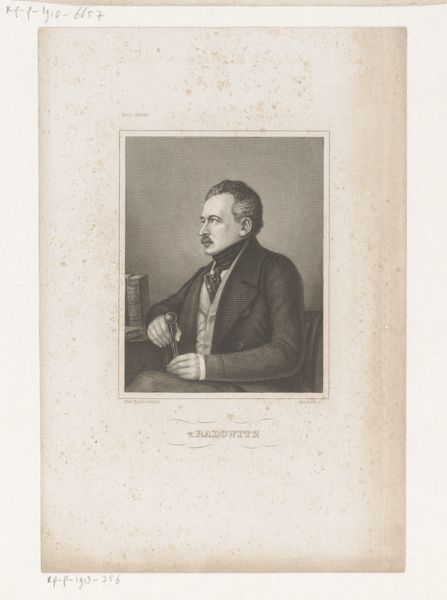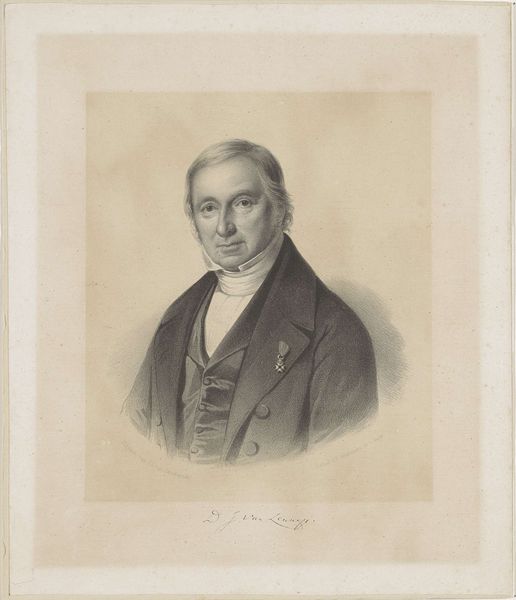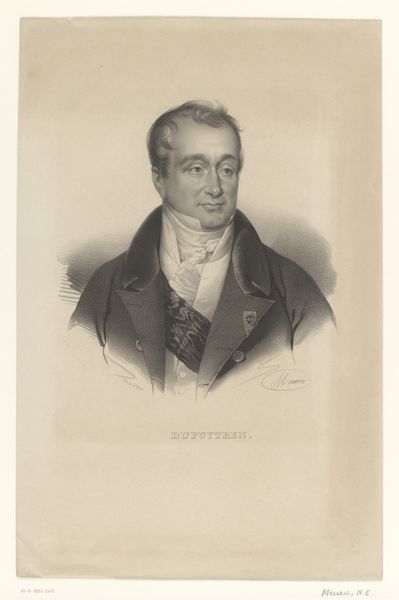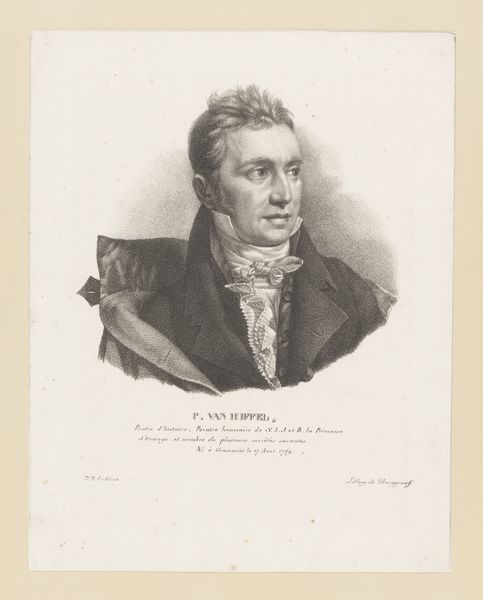
drawing, engraving
#
portrait
#
pencil drawn
#
drawing
#
pencil sketch
#
old engraving style
#
pencil drawing
#
pencil work
#
academic-art
#
engraving
#
realism
Dimensions: height 212 mm, width 147 mm
Copyright: Rijks Museum: Open Domain
Curator: Good morning. We’re standing before "Portret van Guillaume Dupuytren," an engraving created sometime between 1832 and 1873, attributed to Wilhelmus Cornelis Chimaer van Oudendorp. Editor: It gives the impression of stern authority. The subject’s gaze is direct, unwavering, and the tightly knotted cravat seems to add to that feeling of restrained power. It reminds me of legal documents. Curator: Considering it depicts Guillaume Dupuytren, the celebrated French anatomist and surgeon, the portrayal feels apt. Notice how the engraving medium, with its emphasis on line and tonal precision, reinforces this sense of exactness, of scientific observation. Editor: The process of engraving itself strikes me. It demands skill and deliberate labor, forcing the artisan to meticulously carve away material to create the image. You really feel that work; the dense crosshatching building the shadows… Curator: Absolutely. Beyond mere likeness, the portrait serves as a cultural artifact. Dupuytren’s gaze, his bearing, communicates the values and ideals of the medical profession during the 19th century. There’s a psychological element as well, something about confronting mortality in this carefully composed portrait. Editor: The mass reproducibility of engraving meant this image could circulate widely, shaping and reinforcing the professional image of the doctor. How that circulation intersected with social strata… Did every aspiring medic have one of these in his digs? Curator: It's not just a portrait of a man, but also a visual marker for the social status attached to the profession. Perhaps it served to legitimize a nascent medical science, but there's something undeniably hierarchical about that kind of visibility. Editor: Agreed, visibility manufactured with ink and plate and deliberate, back-breaking work. That’s where its power resides – not in individual genius alone, but also the system of material and social reproduction it embodied. Curator: Thinking about how this image lived and what it continues to mean today... That's a powerful testament to art's ability to reflect, and even constitute, our understanding of self and society. Editor: Indeed, tracing the thread of process – the engraving, printing, and its life beyond that first impression– reveals so much about both subject and creator.
Comments
No comments
Be the first to comment and join the conversation on the ultimate creative platform.
